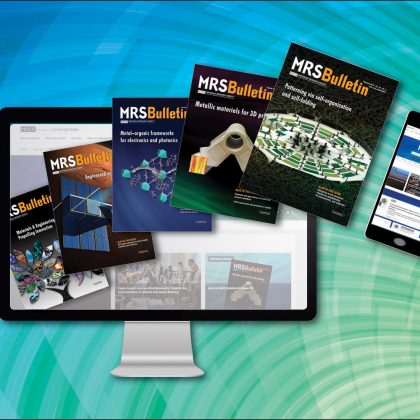Expect the Unexpected
Would you think that materials can have negative elastic constants or even negative mass density?
Although you may have heard about auxetic materials with negative Poisson’s ratio, there are many other mind-boggling effects possible when metamaterials are created. While many of these effects have been theoretically predicted as far back as the last century, rapid developments in three-dimensional additive manufacturing technologies, with resolution reaching into the submicron regime, have now made these materials feasible. That is perhaps the main message of the MRS Communications prospectives article by Johan Christensen and his co-authors on “Vibrant Times for Mechanical Metamaterials.” The article dives into amazing concepts and experimental progress regarding light-weight, negative mass density, negative modulus, pentamode, anisotropic mass density, origami, nonlinear, bi-stable, and reprogrammable mechanical metamaterials. Yes, it’s a mouthful, but it very well reflects this wide-open field of amazing science and possible technological developments.
Metamaterials are based on regular cellular structures, but may be considered materials if the typical length-scale of a stimulus, e.g. an acoustic wave, is much larger than the lattice constant of the periodic metamaterial structure. Under these conditions, a discussion of the material behavior in terms of effective mechanical properties is adequate. For example, negative mass density and bulk modulus are not possible under static loading, but can be achieved for dynamic situations. Here, a negative mass density means that an elastic body accelerates out-of-phase with respect to an applied cyclic force. For a negative bulk modulus, the body would shrink upon dynamic stretching. Combining these two properties leads to the mechanical counterpart of negative-index metamaterials in optics.
It is claimed in the article that metamaterials will impact daily life when additive manufacturing at small-scale makes the anticipated jump from prototype to industrial mass fabrication, and when killer applications for the non-intuitive properties and functions are identified. In that spirit, the article concludes that working on mechanical metamaterials is “cool science” but we’ll need to “let our imaginations fly” for them to lead to designing real-world products.
The paper ‘Vibrant times for mechanical metamaterials‘ is open access.
Authors: Johan Christensen, Muamer Kadic and Martin Wegener, Oliver Kraft, Martin Wegener






